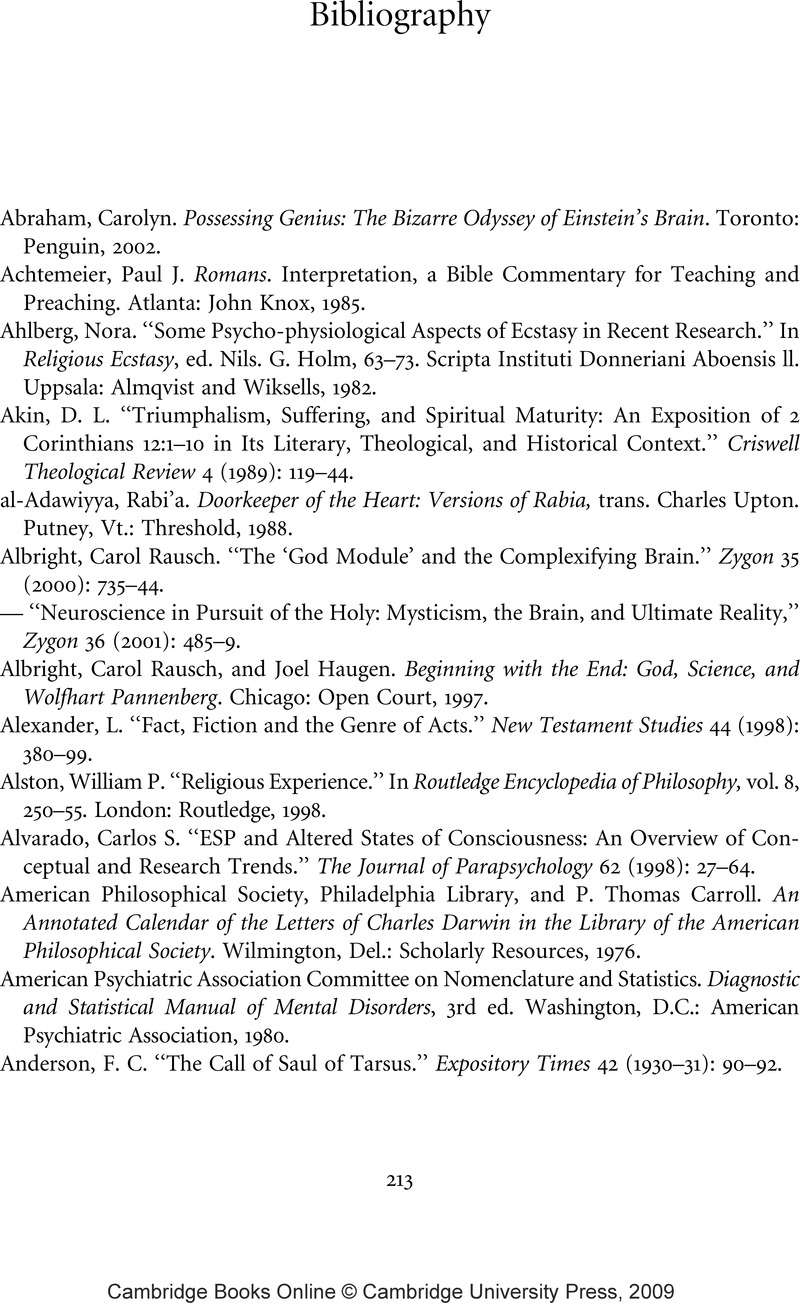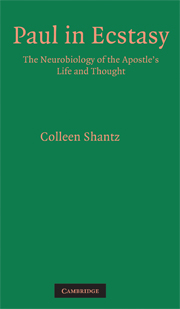Book contents
- Frontmatter
- Contents
- Acknowledgments
- Dedication
- Introduction
- 1 What Ecstasy? An Assessment of the Misregard
- 2 Paul's Brain: The Cognitive Neurology of Ecstasy
- 3 Paul's Voice: Parsing Paul's Ecstatic Discourse
- 4 Paul's Practice: Discerning Ecstasies in Practice
- 5 The Whole Paul: A Short Course in (Nondeterministic) Complexity
- Bibliography
- Index of Ancient Sources
- Index of Modern Authors
- Subject Index
- References
Bibliography
Published online by Cambridge University Press: 06 January 2010
- Frontmatter
- Contents
- Acknowledgments
- Dedication
- Introduction
- 1 What Ecstasy? An Assessment of the Misregard
- 2 Paul's Brain: The Cognitive Neurology of Ecstasy
- 3 Paul's Voice: Parsing Paul's Ecstatic Discourse
- 4 Paul's Practice: Discerning Ecstasies in Practice
- 5 The Whole Paul: A Short Course in (Nondeterministic) Complexity
- Bibliography
- Index of Ancient Sources
- Index of Modern Authors
- Subject Index
- References
Summary

Information
- Type
- Chapter
- Information
- Paul in EcstasyThe Neurobiology of the Apostle's Life and Thought, pp. 213 - 252Publisher: Cambridge University PressPrint publication year: 2009
